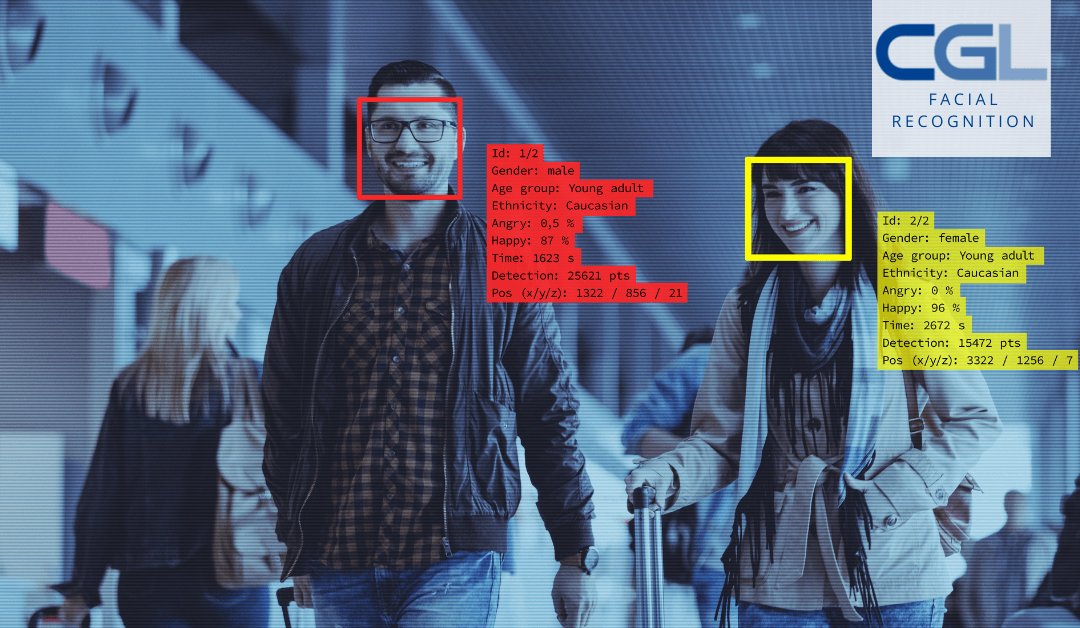Facial recognition is a biometric technology that identifies an individual with unique facial features. Facial recognition systems use computer algorithms to compare selected facial features from a digital image of the person with features in a database.
The main aim of developing facial recognition technology was to identify individuals in large groups and crowds. Facial recognition technology would help quickly identify potential suspects or missing persons and for security purposes at public events.
Facial recognition has many purposes, including law enforcement, marketing, and personal identification. It can be used to identify people in real-time, photos or videos, and can also be used for verification purposes when logging into accounts on devices or websites. The technology is proving its usefulness in various sectors, including public security, law enforcement, businesses, events, and critical Infrastructure facilities.
In this article, we will discuss the benefits of facial recognition for access to buildings, sporting events, transportation services, and areas that need the highest level of security.
The Inner Workings of Facial Recognition Technology
The working of this technology is quite simple. There are two components that work together – the camera and software algorithms. The camera captures the image of the person’s face. The system then extracts features from these images by comparing the shapes of the eyes, nose, mouth, and other parts of the face to a database containing thousands of other facial images. The system typically finds the closest match among those in its database and assigns that person with a unique identifier.
Benefits of Facial Recognition
The use of facial recognition has been a massive success in the public security sector. It has helped law enforcement agencies identify criminals and stop crimes before they happen.
According to a report from NBC, technology is becoming more common among American law enforcement organizations. The technology is being used by cities such as Los Angeles, New York, and Chicago, as well as hundreds of state and local law enforcement agencies.
In addition, the United States Customs and Border Protection (CBP) has pledged to use face recognition to screen 97% of international passengers by 2023.
It is an effective way to improve public safety, as it can identify suspects and prevent crime. The accuracy of facial recognition technology is also improving with the development of deep learning algorithms, which will make it more accurate and efficient for law enforcement agencies to catch suspects.
Faces are Touch-Free
Facial recognition technology is becoming more popular because it is frictionless and touch-free. It also allows people to get access to the internet without a password.
The technology eliminates the need for passwords and other security measures, so people can easily log into their phones, computers, and other devices with just their faces.
Incorporating a contactless access process keeps visitors and staff moving because they are no longer stopping to locate their physical login details or enter their PIN codes. As a result, facial recognition technology offers a frictionless access experience that discourages proximity and encourages social distance. At the same time, it increases operational efficiency by decreasing entry-point wait times.
Quick and Accurate
Facial recognition technology is a fast and non-invasive way to identify people. It does not require a person to stop what they are doing and wait for a police officer or security guard to check their identification.
Facial recognition technology also performs much better than other biometrics, such as fingerprinting or iris scanning. It is also more accurate than these other methods, with a 98% success rate compared to other biometrics.
Compatible with Every Access Control System
Every access control system must have a method for assessing access requests and determining whether the requester is authorized to access the controlled resource. Previously, the most typical methods for users to request access were keypads and card readers. Facial recognition systems can work with any access control system because they can send the same authorization but more secure triggers than traditional access control methods.
Is facial recognition Technology better than Pin codes and other Biometric verifications?
Facial recognition technology is widely considered the most secure biometric verification system available today because it can only be unlocked by the person who owns it.
Some of the advantages of facial recognition over other biometric technologies are as follows:
- It is more accurate than other biometric technologies like fingerprints, palm prints, iris scans, etc.
- It can verify a person’s identity irrespective of the lighting conditions or angle at which the face is captured.
- It can be used on a large number of people simultaneously without any difficulty.
- It does not require any contact with the subject, unlike iris scan and fingerprint scanning, where there needs to be some physical contact with the subject for scanning purposes.
Ask An Expert
The CGL Electronic Security Team of security professionals is available to help you make the right choice to maximize your access control goals and objectives.
To learn more, visit the CGL website or contact me at mikem@cglsecurity.com.
Mike McGuirk, Vice President of Sales, CGL Electronic Security
Copyright 2023

